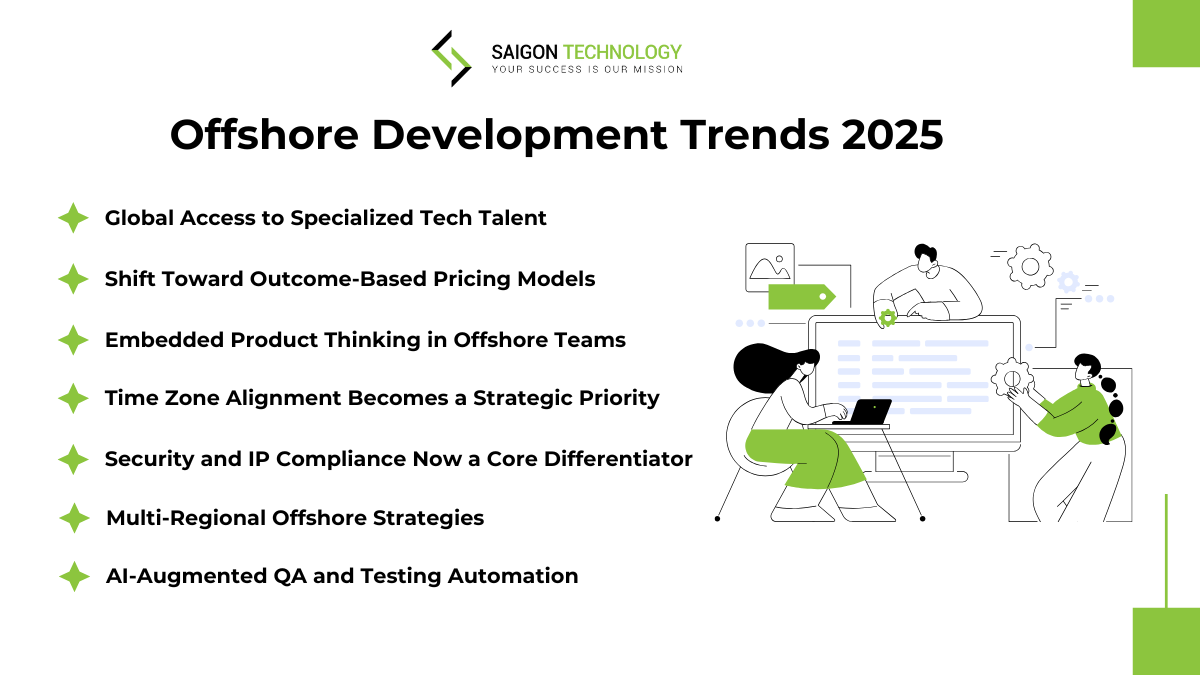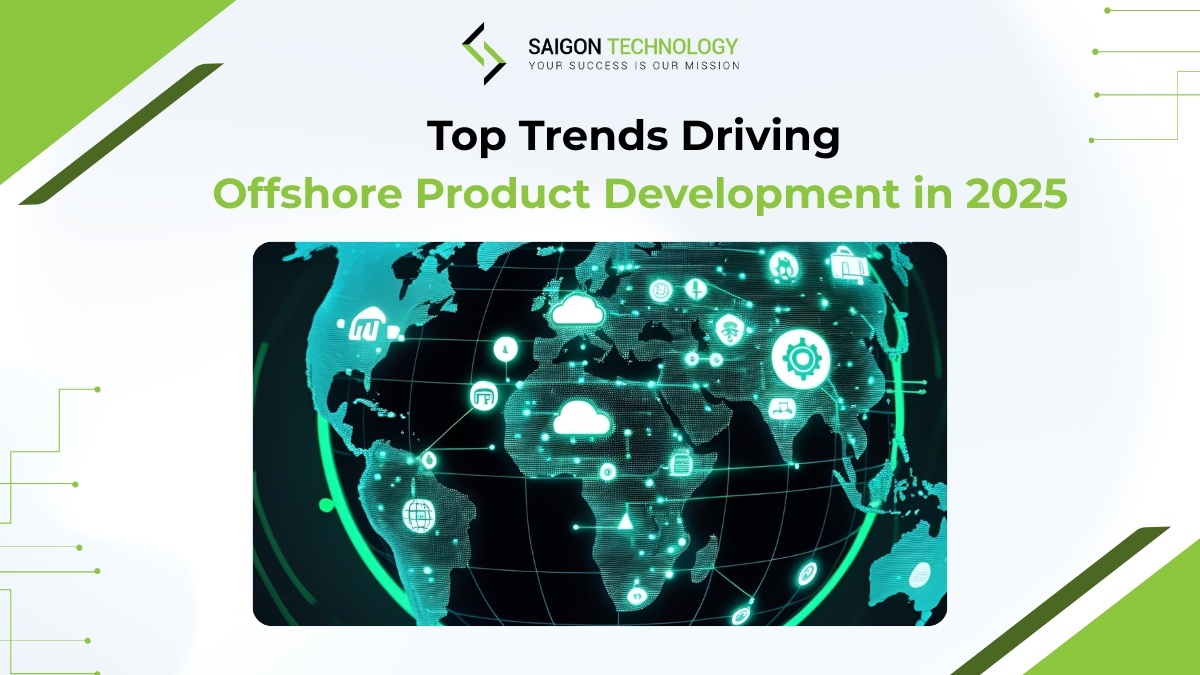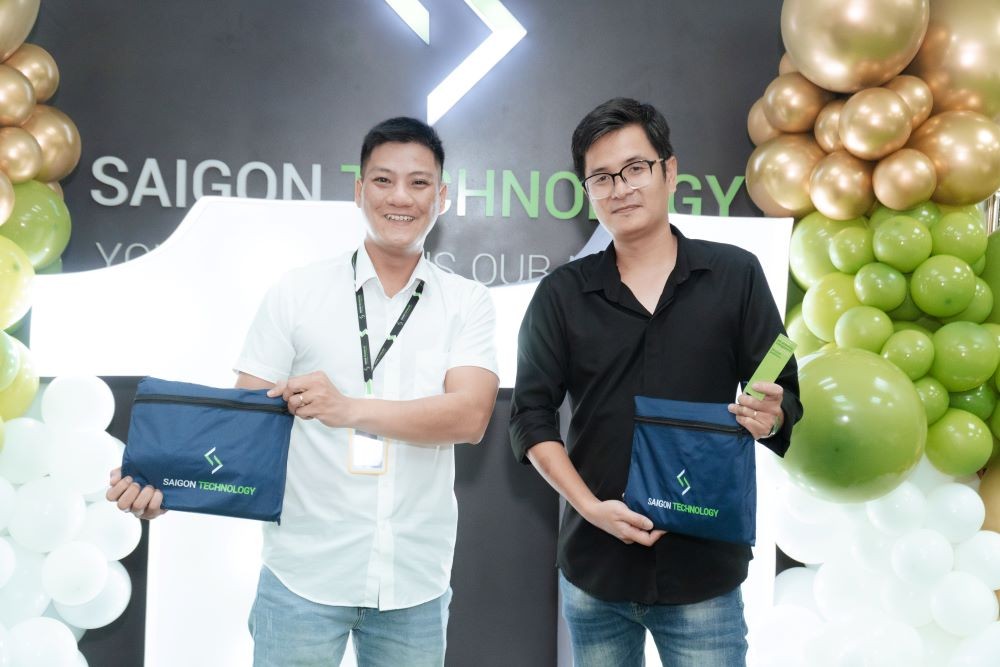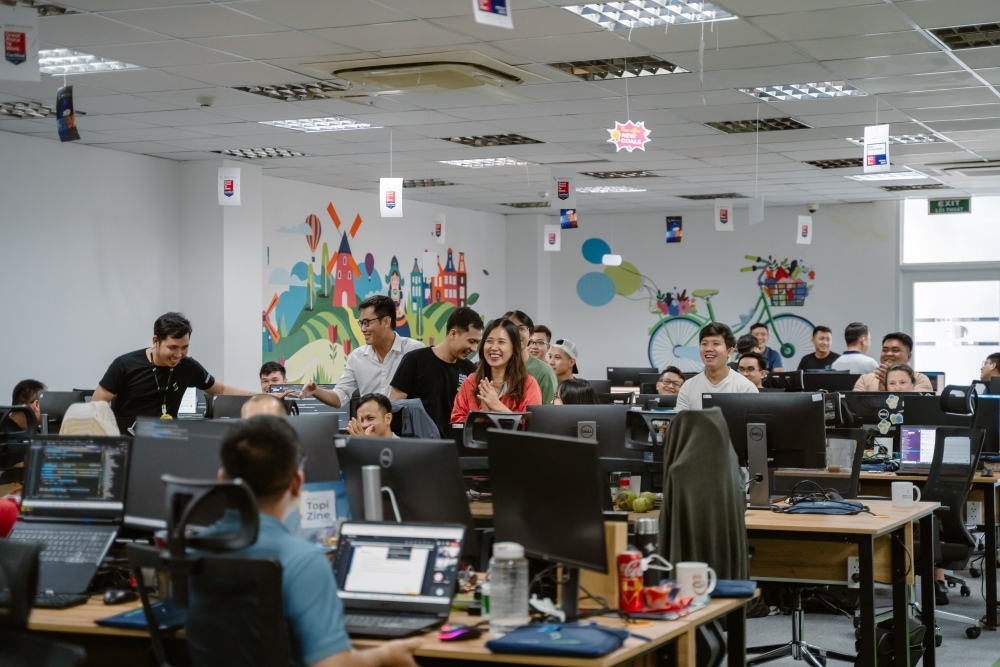Looking for some offshore trends so that you can win the game in 2025? The offshore market has an impressive CAGR of 12.5%. Its value in 2025 is expected to reach $151.9 billion. With rising costs, talent scarcity, and global product ambitions, more companies are turning to offshore solutions. This approach may come with challenges in terms of communication barriers or asynchronous communication. But your offshore partner can help you navigate all the obstacles.
Planning for this strategy? We will break down the top trends that drive offshore product development in 2025. Let’s check what’s new in the industry to work smoothly and thrive!
Top Trends Driving Offshore Product Development in 2025

Trend #1: Global Access to Specialized Tech Talent
What’s Driving the Trend?
In 2025, offshore trends are no longer about hiring cheap generalist labor. Instead, companies want to tap into a global talent pool with highly specialized expertise.
Remote education and global coding bootcamps are popular these days. Online certification platforms like Coursera, edX, and Microverse also help developers build deep skills in these areas:
- Blockchain engineering (Nigeria, Argentina)
- AI development and ML modeling (India, Ukraine)
- MedTech & regulatory systems (Vietnam, Eastern Europe)
- Edge computing & IoT (Mexico, Brazil)
Why It Matters:
2025 is the era of custom application development. Startups and enterprises need niche, highly technical capabilities. Simple frontend and backend work is not enough. Companies can hire offshore talent to access domain-trained teams. These experts benefit from faster time-to-market. Plus, companies can ensure a better fit for their needs. They access specialized knowledge without the lengthy onboarding process.
Trend #2: Shift Toward Outcome-Based Pricing Models
What’s Driving the Trend?
Offshore engagement models are shifting away from traditional Time and Materials (T&M) contracts toward Outcome-Based Pricing (OBP). The OBP means offshore vendors charge based on defined results, milestones, or value delivery. For example, clients can pay for MVP launch, uptime guarantee, conversion rate improvement, or feature adoption KPIs.
This change derives from the demand for accountability and measurable impact. Businesses no longer want to pay for hours. They focus on the results. Offshore partners now need to align compensation with tangible outcomes. Some drivers include:
- Startup funding scrutiny (VCs want accountability)
- Risk-sharing expectations
- Better project scoping tools (e.g., Notion, Linear, ClickUp)
Why It Matters:
OBP creates a more strategic partnership. It encourages offshore teams to stay focused on delivering real value. This shift also supports more customized collaboration models. Businesses really need flexible ways to work with dedicated teams. They can even adopt the Build-Operate-Transfer (BOT) model for long-term growth.
Trend #3: Embedded Product Thinking in Offshore Teams
What’s Driving the Trend?
Offshoring now doesn’t simply mean building what’s told. Top offshore providers expect dedicated teams to co-create the product vision. They actively contribute ideas and suggest UX improvements instead of just executing tickets. The growing popularity of customized collaboration models and Build-Operate-Transfer (BOT) models encourages this trend even more.
Why It Matters:
Both clients and vendors focus on real business outcomes, not just technical tasks. When vendors feel ownership over the product experience, clients can see faster progress. In the meantime, they reduce the feedback loop and improve first-pass delivery quality.
Trend #4: Time Zone Alignment Becomes a Strategic Priority
What’s Driving the Trend?
One of the biggest offshore trends for 2025 is that businesses choose time zone compatibility over chasing the lowest cost. They realize that teams with 4-6 hours of overlapping work hours achieve higher velocity and smoother collaboration. For example, partnerships between parties in the US and LATAM have slight time zone differences. Teams in the EU and Africa, or Southeast Asia and Australia, can enjoy the same benefit. In the end, they can easily speed up the progress.
Why It Matters:
When teams share more working hours, they can have instant feedback. Daily standups and live problem-solving become much easier. This alignment leads to fewer blockers and less rework.
Trend #5: Security and IP Compliance Now a Core Differentiator
What’s Driving the Trend?
Security and compliance are essential factors when choosing offshore partners. NDAs are not enough. Clients expect vendors to act as professional data processors. The vendors should ensure strong data protection policies. Compliance with standards like GDPR or HIPAA is equally important. Many companies prefer vendors certified in ISO 27001. They need cybersecurity experts to safeguard their sensitive information.
Why It Matters:
Weak security practices can turn into lawsuits, fines, and VC deal losses. Offshore teams with transparent compliance processes and security measures stand out more.
Trend #6: Multi-Regional Offshore Strategies (Nearshore + Offshore Blend)
What’s Driving the Trend?
More companies adopt hybrid onshore-offshore strategies. In this manner, they engage multiple vendors across regions. This blended engagement model helps balance talent availability, time zone coverage, and specialized skills. For example, you can run design in Eastern Europe, backend development in Vietnam, and QA in LATAM. The rise of advanced project management platforms and flexible remote work models makes it easier than ever.
Why It Matters:
This approach gives companies the scalability and flexibility to manage projects. Clients can now spread risk and tap domain-specific strengths across regions. This way, they will achieve better resilience and higher quality. They can ensure faster releases as well.
Trend #7: AI-Augmented QA and Testing Automation
What’s Driving the Trend?
Offshore QA teams use AI development tools to streamline testing processes. Deep domain expertise in AI allows them to handle complex scenarios, including Internet of Things (IoT) and Blockchain apps. These emerging technologies help:
- Generate test scripts
- Identify anomalies
- Predict regressions
- Create synthetic test data
Why It Matters:
This trend reduces manual effort while boosting test coverage and reliability. Even small QA teams can confidently manage large, complex test matrices efficiently.
Conclusion
In 2025, offshore trends focus on real results and flexible execution. As a reliable partner, Saigon Technology leads the way with secure, innovative solutions. With our assistance, you can tap into global talent through a dedicated ODC. We help mitigate risks and develop high-quality products as well. Success is on its way!






